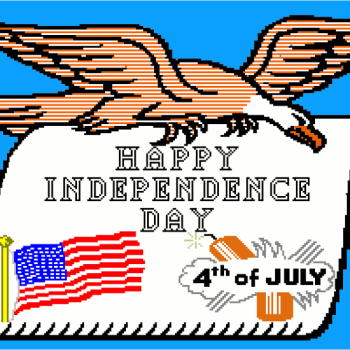The King James Version was not an original translation. It was a revision—technically of the Bishops’ Bible of 1568, but actually of an entire century of English Bible translations starting with William Tyndale. This history lies behind a famous statement in the preface to the King James Version: “Truly (good Christian reader) we never thought from the beginning, that we should need to make a new translation, nor yet to make of a bad one a good one, . . . but to make a good one better, or out of many good ones, one principal good one.”
The King James Bible is familiarly called the Authorized Version, but the king who lent his name to the translation never officially authorized it, even though he hoped that the new translation would help to unify a politically and religiously divided kingdom (a kingdom that would erupt into civil war not long after his death in 1625). Nor did church officials authorize the new translation. The King James Version in reality was authorized by the people, who chose it over others. For three and a half centuries, when English-speaking people spoke of “the Bible,” they meant the King James Version.
The King James translators believed their task was to take readers as close as possible to what the original text says, and in doing so they created a great work of literature. Its style is part of its magic. Yet that style is hard to define.
Modern readers are too quick to conclude that with its now-archaic language and grammar, the Bible’s style is embellished and formal. But thee and thou pronouns and verb endings like walkest and sayeth were a feature of everyday speech in the early 17th century.
However imitated or parodied, the language is dignified, beautiful, sonorous and elegant. “Godliness with contentment is great gain”—six words and unforgettable. “Give us this day our daily bread.” “The Lord is my light and my salvation.” The King James style is a paradox: It is usually simple in vocabulary while majestic and elevating in effect. . . .
For more than three centuries, the King James Bible provided the central frame of reference for the English-speaking world. Former Yale University Prof. George Lindbeck well claims that until recently “Christendom dwelt imaginatively in the biblical world.” During the years of its dominance, the King James Bible was the omnipresent force in any cultural sphere that we can name—education (especially childhood education), religion, family and home, the courtroom, political discourse, language and literacy, choral music and hymns, art and literature. For more than two centuries children in England and America learned to read by way of the Bible. . . .
The influence of the King James Bible is perhaps most profound in the realm of literature. From Milton’s “Paradise Lost” to Toni Morrison’s “Paradise,” it is a presence quite apart from the author’s religious stance. In his book “The Bible as Literature,” British literary scholar T. R. Henn said it best: “The Authorized Version of 1611 . . . achieves as we read a strange authority and power as a work of literature. It becomes one with the Western tradition, because it is its single greatest source.”
Rumors of its demise have been greatly exaggerated. It is consistently, year after year, either second or third on the list of current Bible sales in the United States. Furthermore, the King James Version lives on in two modern translations that perpetuate the translation philosophy and style of the King James Version while updating its scholarship and language. They are the New King James Version and the English Standard Version.
via Leland Ryken: How We Got the King James Bible – WSJ.com.










